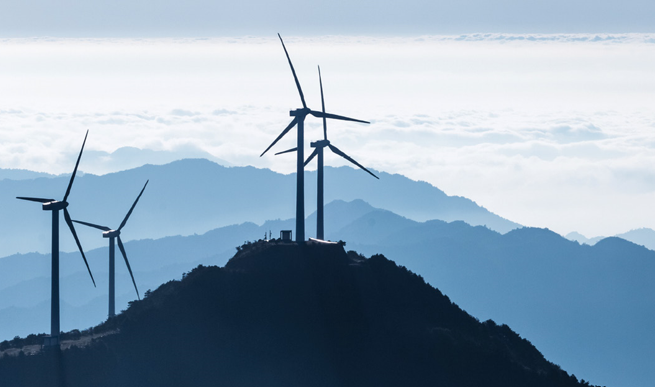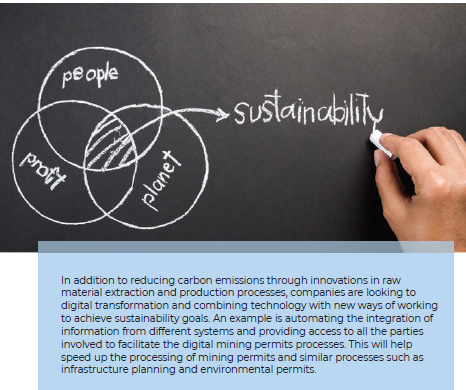Sustainability problems now driving mining and metals innovations

Mining and metals enterprises are experiencing the effects of the broad-based global trend of rising demands to become more environmentally sustainable. The sources of these demands vary, with a list that includes governments and their regulators, customers, and shareholders. Such demands are already having substantial impacts, particularly in countries like Canada and Sweden. The last few years have seen real growth in investments that focus on sustainable industrial systems and business processes (such as the use of electric and hydrogen-powered vehicles, integrated recycling, etc.). Alongside this has been a build-up of green business ecosystems.
Recently, HYBRIT, a Swedish-based green steel venture announced the delivery of the world’s first fossil-free steel or “green steel” to carmaker, Volvo. A few weeks later, Mercedes-Benz announced their own plans to use green steel. A remarkable achievement on all accounts and an optimistic nod for the future. This has been made possible because of a strong history of innovation in Sweden.
In the northern Swedish provinces of Norr Botten and Västerbotten, investments have been announced which exceed €107.5 billion over the next 20 years, mainly in the steel, mining, energy, and technology industries. They focus on sourcing natural materials using green energy-efficient processes or what is called “sustainable mining.” As a part of these plans, more than 25,000 new jobs will be created, which, in turn, means up to 100,000 new residents. The environmental impact of this transition to carbon-free mining and CO2-free steel (also known as “green steel”) is enormous. In Sweden, the mining and steel industries account for 10% of CO2 emissions; worldwide, they account for about 7%.
Sustainable transformation is more than producing CO2-free steel in new factories or building massive battery factories. It is about building long-term
sustainable mines with highly digitized and automated operations alongside green hydrogen factories that power production. It is also about building a circular economy with strategic products created from mining waste that can be processed again to produce rare earth minerals and fossil- and cadmium-free fertilizers.
It can be hard to visualize the massive investment being made in Sweden to become sustainable. Here is an analogy to help illustrate the magnitude of difference between a million and a billion. If you spend a dollar every second for an entire day, it will take a little over 11 days to spend a million. It will, however, take you 32 years to spend a billion.
These bold investments are based on a solid foundation laid over a 100 years ago when the mines in northern Sweden were created. To transport the ore from the mines, 650 km of railroads through the arctic mountains to Narvik port were laid. Early on, it was also decided to electrify this long stretch of railroads (an innovative technology at the time). This led to the building of huge hydropower plants along the Luleå River. In fact, the first plant built in a village called Porjus was the first in a series of plants that now produce 46% of Sweden’s total energy.
Since electricity could not be transported far at the time, a smeltering plant in Porjus was planned as it was near the energy source and the raw material to be processed. However, these plans were cancelled when modern technologies enabled more efficient transmission of electricity over long distances. This idea has come full circle today with investments in new CO2-free plants that are built close to the mines and the green hydropower energy source, achieving greater sustainability impact.
In one of those early investment years, 7% to 8% of Sweden’s GDP was allocated to these massive projects. The pioneering efforts that began over a century ago continue to contribute significantly to Sweden’s prosperity. Like any solidly constructed foundation, the forward-looking efforts of the past are supporting the trailblazing advances underway. Continuous innovation, research, and transformation are also why the Swedish mining industry has survived and thrived through product and production evolutions.

Change often starts with one or several of these reasons:
• Advances in technology
• New laws and trading requirements
• Evolving customer needs
• Competition
All these factors are contributing to the changes which are now underway. The investments are linked to reducing CO2 emissions. They will also accelerate the transformation required.
The need to quickly minimize environmental impact and emissions is heightened by increased demand for environmentally friendly production and products. At the same time, change creates opportunities to lower costs by using modern technologies such as automation and rethinking how we work. Reducing costs also includes reducing future emission charges and taxes.
Sustainable transformation programs are taking place across all segments of the economy and of society. These programs sometimes also result in increased use of resources, especially minerals, which form the basis of everything from smartphones to car batteries. An effective production and supply chain from mine to recycling is needed to ensure these programs are true to their sustainability goals.
Along the entire value chain from raw materials to the finished product, demands are increasing to provide evidence of the so-called “purity.” To achieve this, an increasing amount of produced and stored data is required, which, in turn, requires connection to digital traceability solutions. And, of course, all this additional data must be handled without creating non-green emissions. The application of space technology, for instance, is becoming more common to support traceability and analysis, partly to track and measure emissions and also to understand and optimize the supply chain. For example, the European Space Agency (ESA) has begun working on a digital twin of Earth to understand better how global food management works. This is the first step in creating an ecosystem around food management.
Digital transformation strategies that incorporate data-driven operations are a natural and necessary part of the transformation, so is working with an ecosystem of partners. Therefore, the technology industry will play a key role in supporting the change and will be core to helping mining organizations reinvent for the future. Optimizing processes, transparent reporting of relevant emission KPIs (key performance indicators), efficient water consumption and re-use, and energy efficiencies are all areas where metals and mining companies can benefit from deep technology experience.
Moving from reacting to predicting in future mining operations requires collaboration, and to produce carbon-free products, all parties in the ecosystem must be “clean.”
Gordon Feller is a freelance writer.
Comments